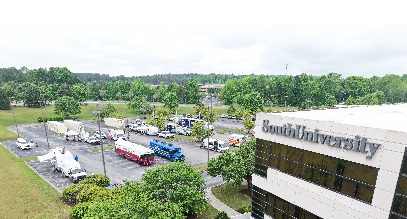For much of the early 1900s, driving an automobile was particularly dangerous. Yet, by the end of the 20th century, the fatality rate had dropped by 90% – an impressive change that demonstrates the power that public health professionals have to improve our communities.
Achieving this result required people from policymakers to researchers to educators to join together on a shared mission. Eventually, they convinced the government to enact regulations that led to safety features like headrests, energy-absorbing steering wheels, shatter-resistant windshields and safety belts. Roads were improved with lighting, guardrails, lane barriers, breakaway signs and more. Safety laws and public education campaigns on topics like child safety and driving under the influence also inspired safer behavior.
Yet improved motor vehicle safety is far from the only public health campaign that has shaped our society over the years. “Immunizations, workplace safety, family planning, cleaner water, healthier mothers and babies – many of the greatest achievements of the 20th century have been in the field of public health,” says Associate Professor and Chair of the South University Public Health programs, Jason Robertson.
The Ongoing Impact of the Public Health Field
Today, public health workers continue to focus on these areas and others like gun violence, substance abuse, pollution and infectious diseasesthat impact communities of all sizes. Whatever the topic, public health professionals are applying their expertise to conduct research, offer educational programs and outreach, and develop public health policies and guidance that help societies make smarter choices for our health and wellness.
Public health professionals also create and administer programs that prevent and address health problems across an entire community of people. Often, these programs are built to reduce inequities in healthcare quality and accessibility. For example, public health workers may host clinics that offer health screenings at no charge or may arrange complimentary ride programs to ensure communities can access the services they need. In every case, public health solutions consider not just physical health but also a population’s emotional and mental needs along with the environments in which people live and work.
The Best Part of a Public Health Career
As a professor, Robertson interacts with many students excited by the chance to help multiple people and large groups at once. Often, students feel called to work with particular populations and to eliminate disparities that exist between different communities. Another draw is the holistic approach to care and the ability to work together with people on problems.
“We meet people where they are. I love that about public health,” says Robertson. “We do things with people rather than to people. Because we approach health from multiple angles, we can develop interventions and programs that meet their complex needs.”
The potential opportunities for a public health career are wide-ranging, covering areas such as:
- Public health education
- Emergency management
- Environmental health (often involving water quality and sanitation)
- Public health policy and administration
- Global health
- Community planning and health
- Health communications
- Biostatistics and informatics
- Epidemiology (usually requires a master’s degree in public health or higher)
- Occupational health and safety
Once they’re in the field, public health workers have the option to adjust their focus to another area at any time and apply their skills to make a difference in a new way. Ultimately, whichever specialty or population they choose to work with, public health workers have always managed to leave a significant and lasting impact on society, and, as the challenges we face continue to evolve and change, their work will help us to build a happier, safer and healthier world.




